
Article contents

You’ll likely need both types of pensions for retirement. The State Pension is the pension you’ll get from the government when you reach State Pension age (currently 66). And a private pension is one you pay into yourself, through your job, or by setting one up yourself, or both (recommended) – it’s pretty essential to build up a big private pension for a comfortable retirement these days.
“What’s the difference between the State Pension and a private pension, and what should I be doing for retirement?”
You’ll very likely need both types of pensions for your retirement, in fact, you'll need a very hefty private pension these days, and that’s alongside the State Pension – we’ll cover why, and how to get on track for a comfortable retirement below.
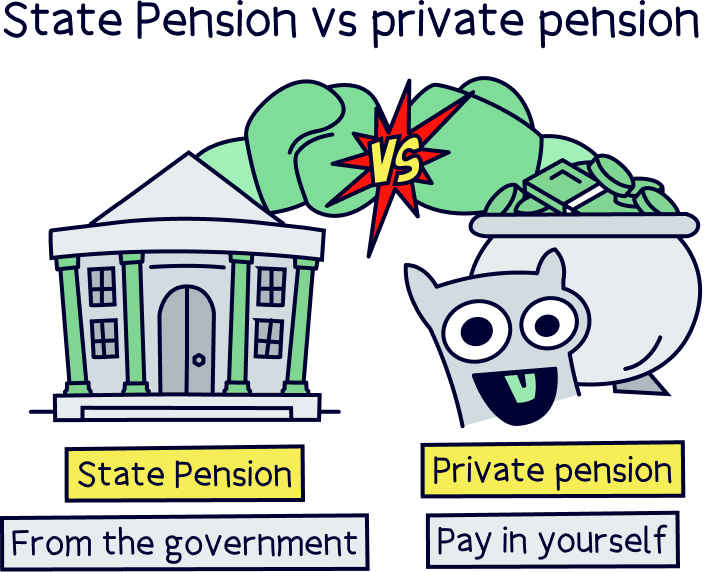
In the UK, we have the State Pension, which is the pension you’ll get from the government when you reach State Pension age (currently 66). That’s as long as you’ve paid enough National Insurance contributions over your lifetime – at least 10 years to get some, and 35 years to get the full amount.
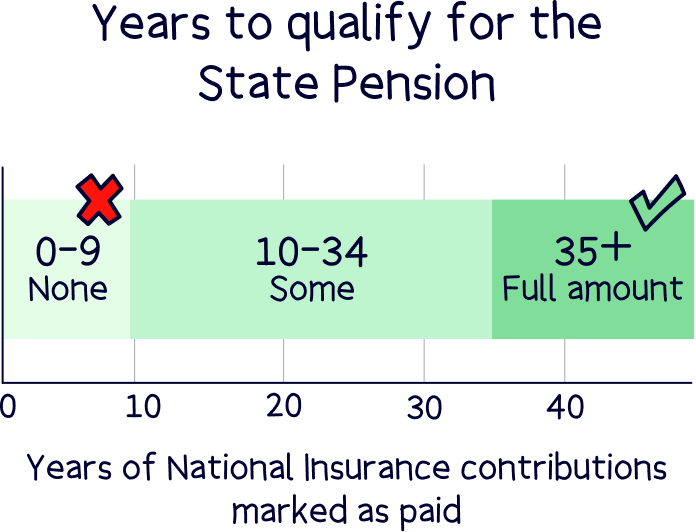
The full State Pension is currently just £230.25 per week (£11,973 per year), so very likely not enough to tide you over in retirement – it’s quite a bit shy of the recommended minimum retirement income of £13,400 per year, and very far below the recommended amount for a comfortable retirement, £43,900 per year.
Check out PensionBee, it’s easy to use, has low fees and a great record of growing pensions over time.
We’ll run through where those figures come from just below, but in order to boost your retirement income, you'll need a private pension – and they’re pretty great.
Nuts About Money tip: if you’re not sure how many years worth of National Insurance contributions you’ve paid, check the government’s State Pension forecast tool, where you’ll also be able to fill in any gaps (missing years) within the last 6 years, all online too (called voluntary contributions).
Private pensions are pensions in your name (private to you), rather than the government pension. So you own all the money within it, and can ultimately do what you like with it – you typically decide how much to save into it, and later when to start withdrawing from it (kind of like a savings account).
However, they can get a little bit confusing, as there’s two main types of private pensions, a workplace pension (a pension from your job), and a personal pension (a pension you set up yourself).
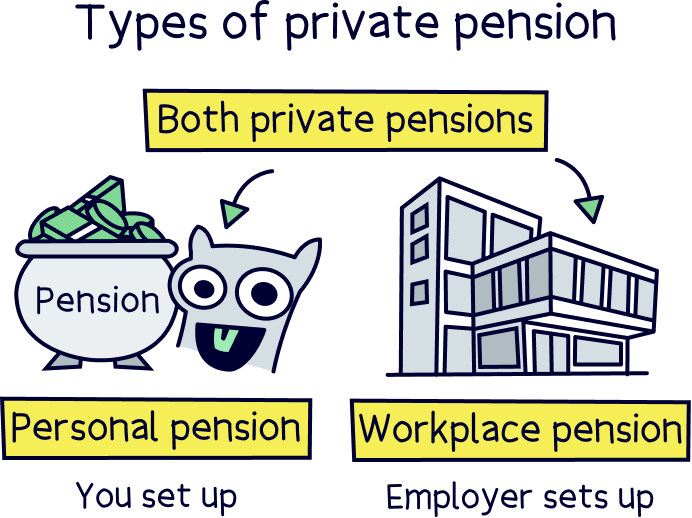
Note: often, the word private pension is used for personal pension, which can cause a bit of confusion.
They’re hands down the best way to save for retirement, and come with amazing benefits to help you save too – you can save into a private pension completely tax-free, your money grows tax-free, and they can grow very large over time (thanks to experts sensibly investing the money).
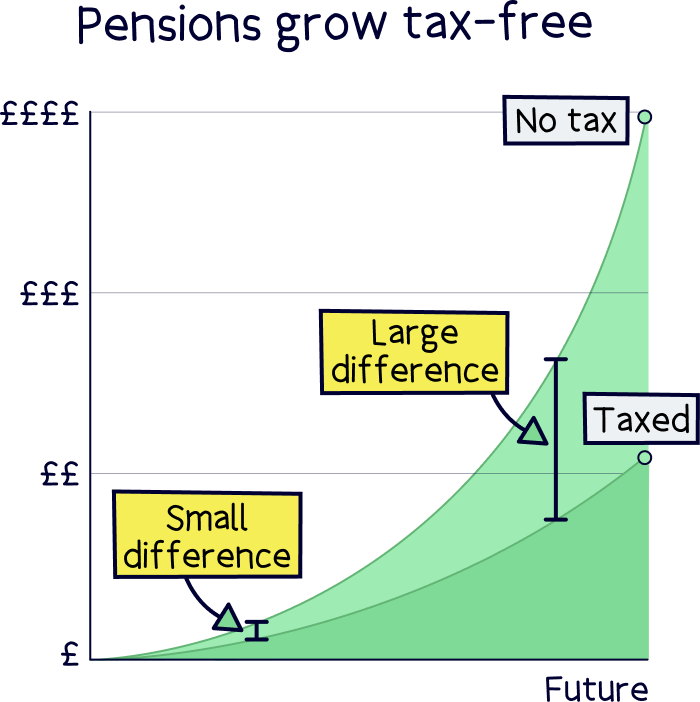
You can also withdraw 25% completely tax-free too, and as a lump sum if you want to (all in one go).
We’ll cover all of the benefits in detail in a moment. First, let’s run through each type.
A workplace pension is a pension set up by your employer (if you are employed of course). Your employer will decide which pension provider (company) to use, and when you start a new job, they’ll set it up for you automatically (called auto-enrolment).
And by law, if you save 5% of your salary, they’ll have to add 3% in themselves too. How great is that? And some nice employers even add even more too (sometimes if you add more yourself – if they do, take full advantage!).
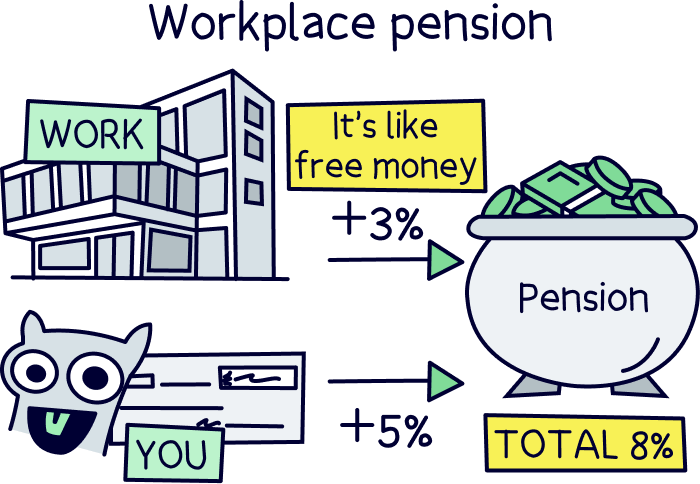
What we’ve talked about there are called defined contribution pensions, a pension that you save into and it has a pension pot value (e.g. £100,000), which you decide when you want to withdraw from it – these are common in most jobs.
However, there is also another type of workplace pension scheme called a defined benefit pension, which is common in public sector jobs, such as the NHS. These are where you normally get a guaranteed income when you retire, normally for life, based on things like how long you’ve worked there and your salary. These can sometimes be called final salary pensions, or average salary pensions.
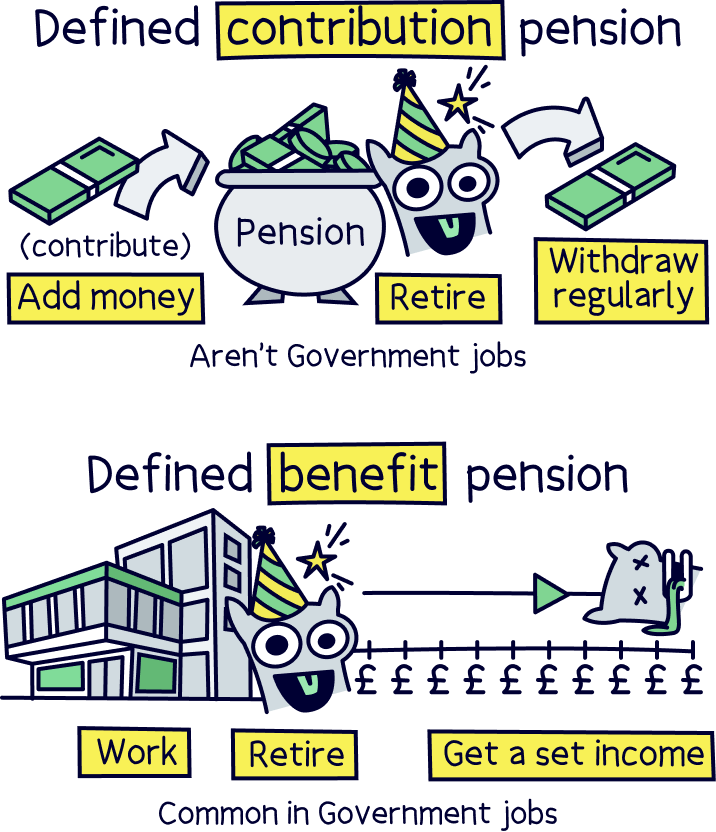
Personal pensions are pensions you set up yourself, and save into them as and when you like – after you’ve been paid (like a savings account).
And they’re pretty great, you’ll get a massive 25% bonus on all of your contributions, and can claim back 40% or 45% tax if you’ve paid it on your income (more on that later).
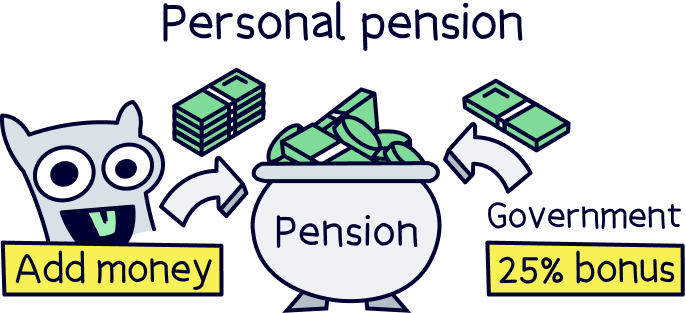
If you’re self-employed, they’re your only option, but a great one. But they’re not just for the self-employed, they’re a great addition to a workplace pension to boost your total pension pot amount and build a comfortable retirement.
Nuts About Money tip: if you are self-employed, here’s our guide to self-employed pensions.
Here’s where it gets a bit more confusing (again). There’s two different types of personal pensions, a ‘regular’ personal pension, where the experts handle the investment side of things, and a self-invested personal pension (SIPP), where you make the investment decisions.
But to make things even more confusing, a SIPP can also be managed by experts these days, which basically makes them the same as a regular personal pension. It’s just traditionally, they were designed for you to manage your own investments. We said pensions were confusing didn’t we?!
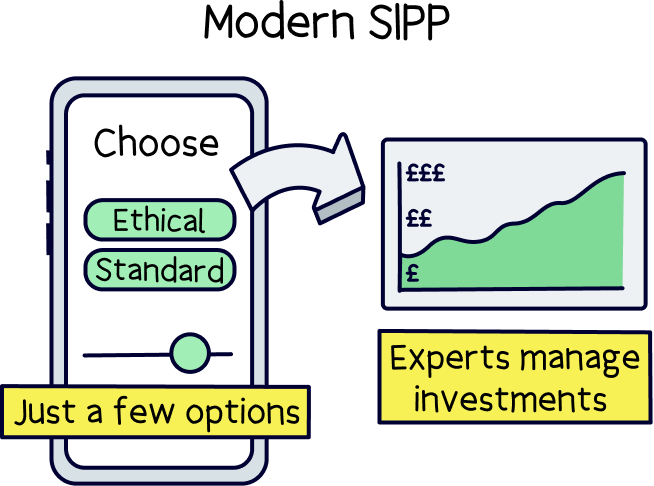
So, at Nuts About Money we categorise personal pensions into expert-managed personal pensions and self-managed personal pensions – and recommend most people simply opt for an expert-managed pension, unless you’re an experienced investor.
Nuts About Money tip: if you want to make your own investments, check out the best SIPPs.
Anyway, personal pensions come with basically all the great benefits of workplace pensions, except that your employer won’t contribute to it, so no free 3%. And some workplaces can reduce your salary and pay the difference into your pension, called salary sacrifice, which can also reduce National Insurance contributions.
However, aside from that, personal pensions are generally much better than workplace pensions, as you get to pick which pension provider you want to use, so you can pick one that’s easy to use, has low fees and a great record of growing pensions over time (or one to make your own investments).
That’s why it’s often a great strategy to make the most of your workplace pension to get the free 3% from your employer (and more if they add more), and then save into a personal pension, where you have lots more control, and can potentially benefit from better pension growth (rise in value of your pension) and things like lower fees and better customer service.
If that sounds interesting, we’ve reviewed all the best pension providers, and here’s our top picks…
Private pensions you set up yourself, and managed by experts.
Get £50 added to your pension



PensionBee is our recommended provider – they’ve thought of everything.
Their 5 star rated app (and website) makes it easy to set up and use. You can open a brand new pension, or transfer your existing pensions across (they’ll handle all the paperwork).
Simply pick from an easy to understand range of pension plans, and that’s it, the experts manage everything from there.
It’s low cost, with one simple annual fee. The customer service is excellent, and you’ll get a dedicated account manager for any questions you might have.

And, when the time comes to retire, withdrawing from your pension is easy too.
You can also use them if you're self-employed or a company director.
Great app



A great and easy to use pension. Add money from your bank or combine old pensions into one, (they’ll find lost pensions too).
The customer service is excellent, with support based in the UK.

Beach is an easy to use pension app (and easy to set up), where you just add money and the experts handle everything. It’s all managed on your phone with a great app, and you can see your total pension pot whenever you like.
If you’ve got lost or old pensions, Beach can also find them and move them over too, so you can keep all your retirement savings in one place, and never have to worry about losing them in future.
You’ll get an automatic 25% bonus on the money you add to your pension pot from your bank account (tax relief from the government), which refunds 20% tax on your income, and if you pay 40% or 45% tax, you’ll typically be able to claim the extra back too.
The pension plan (investments) are managed by experts, who are the largest investment company in the world (BlackRock). And they consider things like reducing climate change, meaning your savings could make the world a little better in future too.
You can also save and invest alongside your pension with an easy access pot (access money in around a week), designed for general savings, with the investments managed sensibly by experts too. And money made can be tax-free within an ISA.
Fees: a simple annual fee of up to 0.73% (minimum £3.99 per month).
Minimum deposit: £25
Customer service: excellent
Pros:
Cons:
Check out PensionBee, it’s easy to use, has low fees and a great record of growing pensions over time.
Find a pension expert (financial advisor) in your local area.



Unbiased is a great online service to help you find expert financial advisors, mortgage brokers, insurance brokers and accountants in your local area.
It’s very popular, and pretty much the go-to-place to find financial advisors local to you.
All advisors are fully vetted, qualified and have years of experience.
You’ll be able to chat on the phone, video call, or visit in person (depending on the advisor).
It’s free to use the service, you’ll pay the advisor directly if you choose to use them (fees vary per advisor and service you’d like).

Check out PensionBee, it’s easy to use, has low fees and a great record of growing pensions over time.
We’ve touched on the recommended amount of income you’ll likely need in retirement. Let’s run through that in more detail.
The Pensions and Lifetime Savings Association have put together three categories representing how much you might need in retirement, which are called the Retirement Living Standards, and are categorised as minimum, moderate and comfortable…
And here’s what that looks like as an income each year, and how much you’ll need in your private pension (so in addition to receiving the State Pension):
Yikes. It’s a lot isn’t it? As you can see, the State Pension doesn’t quite cut it, with a yearly income of just £11,973 compared to the minimum recommended amount of £13,400.
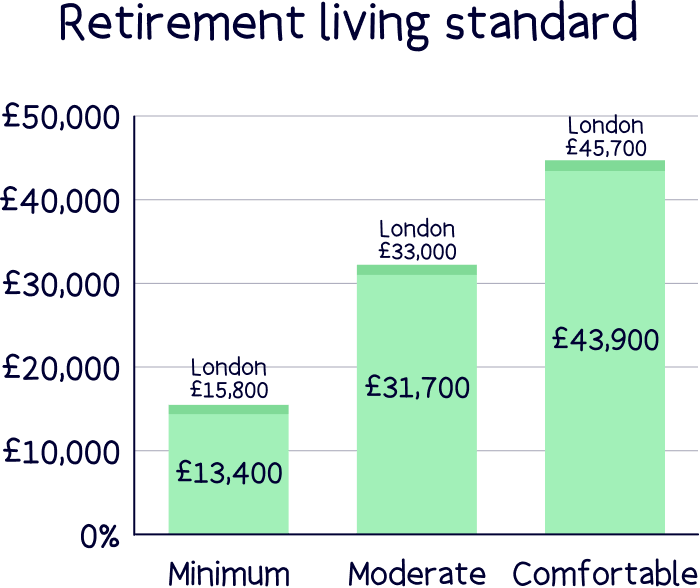
Don’t panic just yet though, private pensions are pretty great at building up a pension pot over time, with all the great tax-free saving benefits they come with, and how big they can grow given enough time, thanks to something called compound interest.
Compound interest can turn relatively small amounts of money into very large sums over time. It works by your pension money being invested (sensibly by experts), and this typically makes more money, and the money it makes begins to make money too, and this snowballs over and over, growing into huge numbers.
Let’s look at an example. Imagine you currently have a pension pot worth £10,000, and you were able to save £220 per month into it, and it also grew by 7% per year (on average).
After 25 years, you’d have an amazing £235,470. And another 10 years after that it would have doubled to £511,294!
And then one year after that, you’d make £35,791, and keep growing from there. How great is that? Can you see how you could afford that comfortable retirement after all, as long as you’re able to save early (if possible), and save regularly each month.
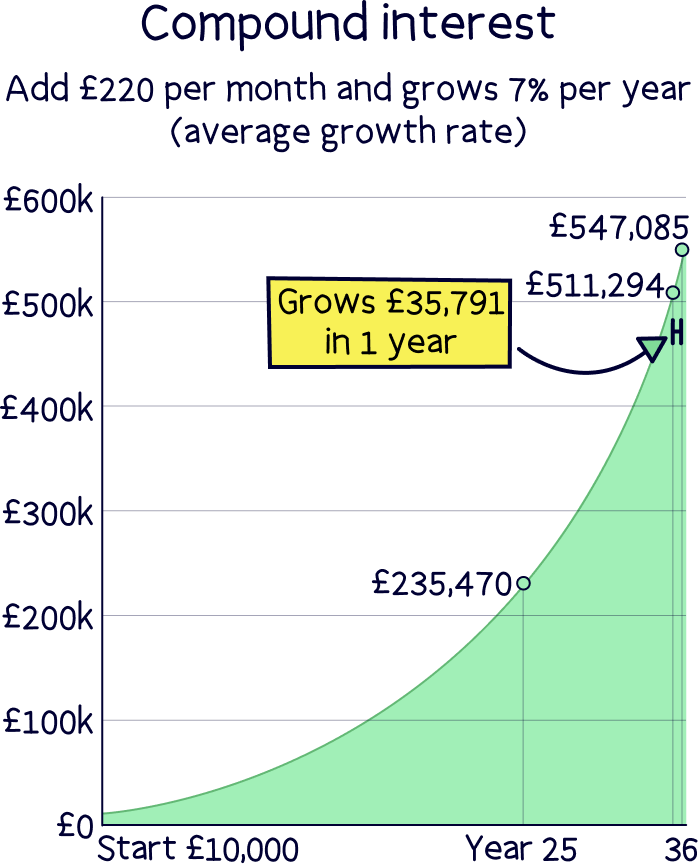
As a reminder, if you’re not sure where to get started with a pension, check out PensionBee¹, it’s easy to use, has low fees and a great record of growing over time. You’ll also get £50 added to your pension for free with Nuts About Money.
Let’s run through all those amazing benefits of private pensions we mentioned.
One of the best benefits is you get to save into them completely tax-free. If you’re employed and paying into a private pension from work (a workplace pension), your money will go straight from your pay into your pension without any tax being taken off.
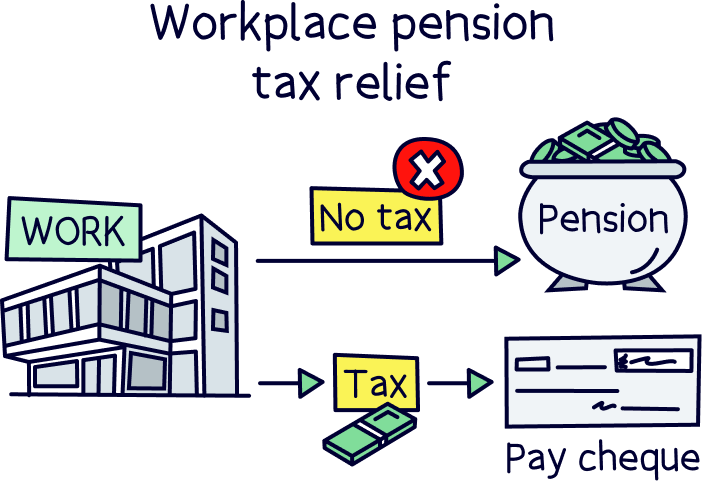
And if you’re paying into a personal pension, you’ll get the tax you have paid on your income back as a refund (as you can’t pay into a personal pension before you pay tax). This is a 25% bonus from the government, whenever you add money into a personal pension. Sounds pretty great right?
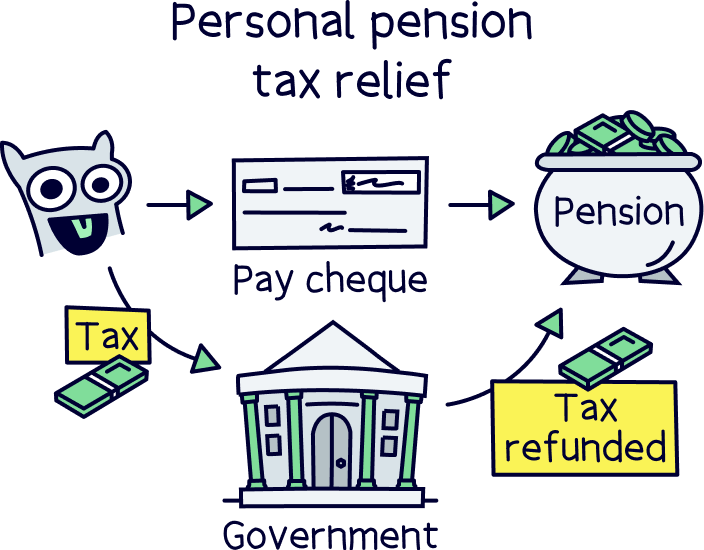
And if you’re a higher rate taxpayer (earning over £50,270 and paying 40% tax), or additional rate taxpayer (earning over £125,140 and paying 45% tax), you can claim back some of the tax paid at those rates too, on a Self Assessment tax return.
Note: technically, this is called tax relief.
From the age of 55 (57 from 2028), you’ll be able to start withdrawing from your pension. You can withdraw 25% completely tax-free, and you can take this as a tax-free lump sum if you like (all in one go).
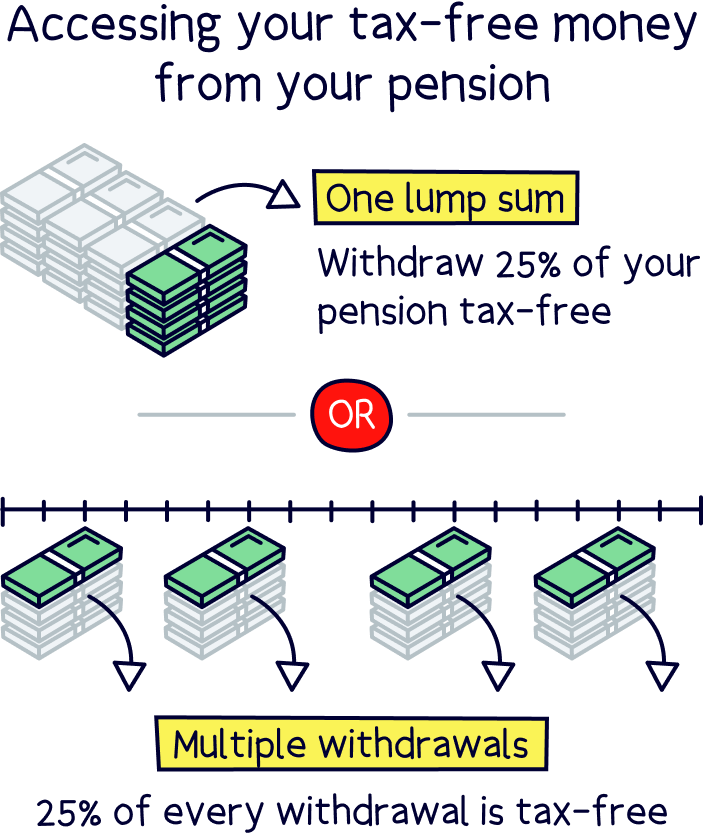
With the remaining 75%, you might pay Income Tax on it (the same as your salary now), it all depends on your actual income at the time. You’ll still get the personal allowance of £12,570 per year before you pay any tax (just like you do with your job now).
Pensions have another special feature – they don’t count towards any Inheritance Tax that your family might pay when you sadly pass away.
That’s because pensions don’t count towards your ‘estate’, which is all of your money, property and things added together. Your family might have to pay 40% Inheritance Tax on anything above £325,000. Ouch.
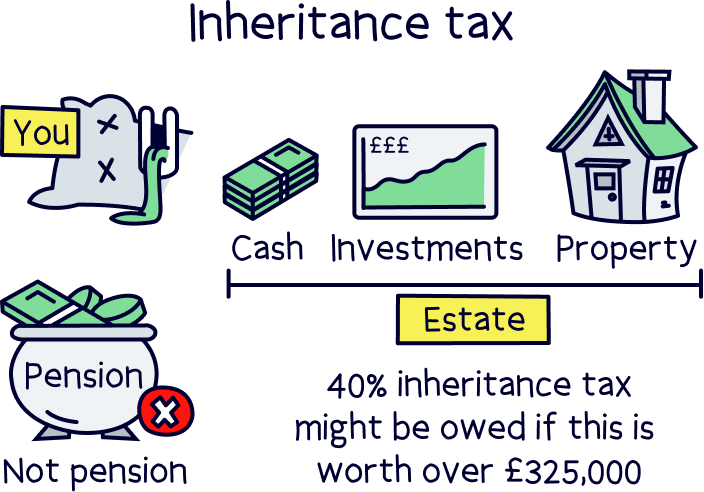
With your pension, you can decide who receives it, and if you pass away under the age of 75, they won’t have to pay any tax at all. After 75, they might pay Income Tax on what they withdraw, it depends on how much their income is at the time.
There are some limits to be aware of. You can only save as much as your total income (e.g. your salary) into your private pension, or £60,000, whichever is lower.
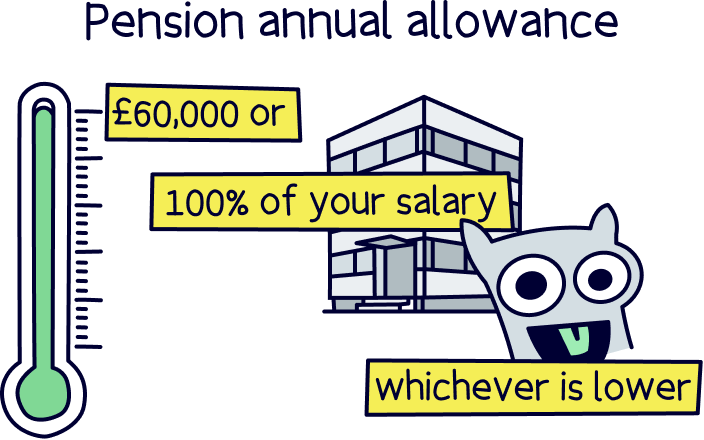
However, if you haven’t used up your last 3 years worth of your allowance, you can use that too – providing you have a pension open during those years.
And when you start withdrawing from it (apart from taking the 25% tax-free lump sum), your annual allowance of how much you can still save into your pension will reduce to £10,000. This is called the Money Purchase Annual Allowance (MPAA).
If you’ve got a very hefty pension, there’s a limit to how much will count towards the 25% tax-free part, which is £268,275 (so you can only withdraw that much tax-free).
And in case you missed it earlier, you can only start withdrawing from your pension from the age of 55 (57 from 2028).
Private pensions are pretty cool too (in a nerdy sort of way). You can transfer and combine all of your private pensions into a single pension pot if you want to, which is called pension consolidation.
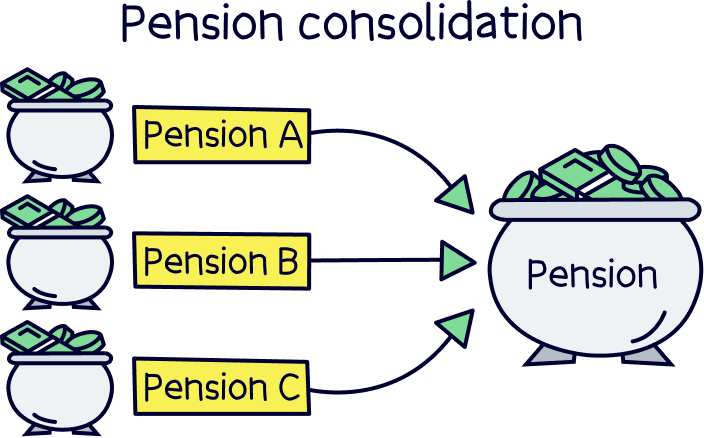
If you’ve got lots of old pensions from old jobs lying around just collecting dust, you can combine all of your pension savings into a new personal pension.
Meaning, you’ll never forget about your pensions when the time comes to retire (which happens way more than you might think).
And, you can make sure all your pension savings are working hard for you – with a great modern provider, growing in the way you like (with the experts), paying low fees, and making the most of things like great customer service and a mobile app to manage your pension whenever you like.
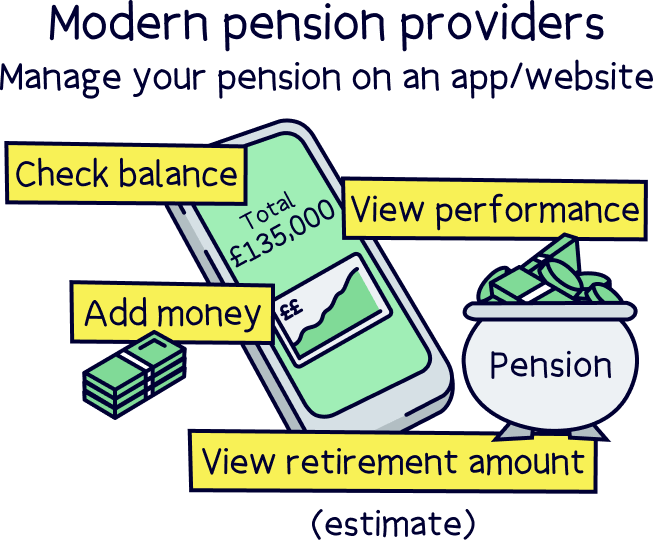
Modern providers really are pretty great, and they’ll also handle the whole pension transfer process for you too. As a recap, check out PensionBee¹ for all of those reasons.
Nuts About Money tip: if you think you’ve got any lost pensions, try Beach¹, an easy to use pension with a great app. Add money or combine old pensions (and find lost pensions). Plus, the customer service is excellent.
When you reach the grand old age of 55 (57 from 2028), you can typically start withdrawing from your pension if you want to. However, it’s a great idea to keep this growing bigger and bigger over time, until you really do retire.
If you want to, you can withdraw 25% as a tax-free lump sum, and then take the remaining 75% as and when you like.
When you reach State Pension age (currently 66), you can start claiming the State Pension too. Or, you can opt to defer it until you really retire, and get a bigger amount each week.
With private pensions, there’s two main options, you can either simply leave your pension where it is, and withdraw from it (e.g. monthly). This way it can keep growing within the pension too. This is called pension drawdown.
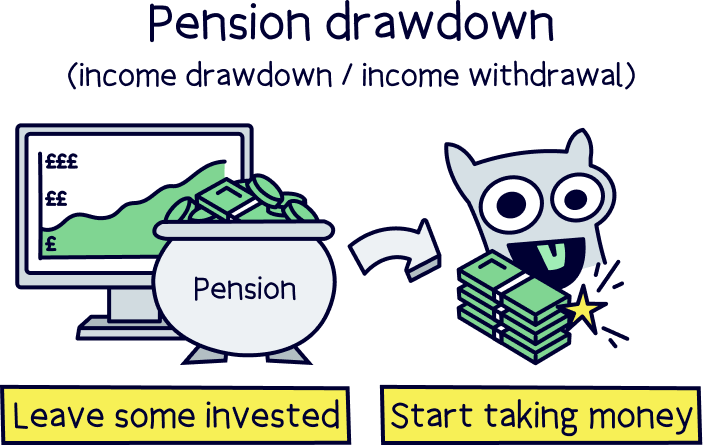
Or, you can opt to buy a pension annuity with your pension pot, which will provide a guaranteed income for the rest of your life (or a set number of years). You can even do a bit of both options if you want to.
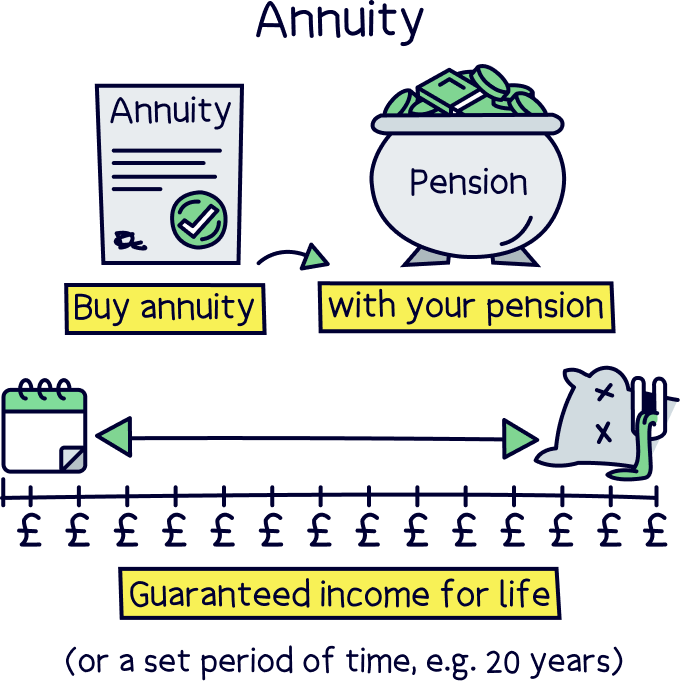
To learn more about this, check out our guide: drawdown vs annuity. And if drawdown is for you, here’s the best drawdown providers.
You can also get great advice on all your options with a financial advisor.
There we have it. The State Pension and private pensions are completely different, and you shouldn’t pick one over the other – you’ll likely need both to tide you over in retirement.
And for a more comfortable retirement, you’ll need a large private pension. The best time to start a private pension is today, and don’t delay, the sooner you can save, the bigger your pension pot can grow (and try and save as much as you reasonably can).
We recommend checking out PensionBee¹, it’s easy to use, has low fees, and a great record of growing pensions over time. And you’ll get £50 added to your pension for free with Nuts About Money.
Beach¹ is also really great, they don’t just cater for pensions, they have an easy access account too (a tax-free ISA), plus the app is easy to use and the customer service is excellent. For all the top pension options, here’s the best pension providers.
All the best saving for your future.
Check out PensionBee, it’s easy to use, has low fees and a great record of growing pensions over time.
We’d love to hear from you, and it will help others too.
Check out PensionBee, it’s easy to use, has low fees and a great record of growing pensions over time.